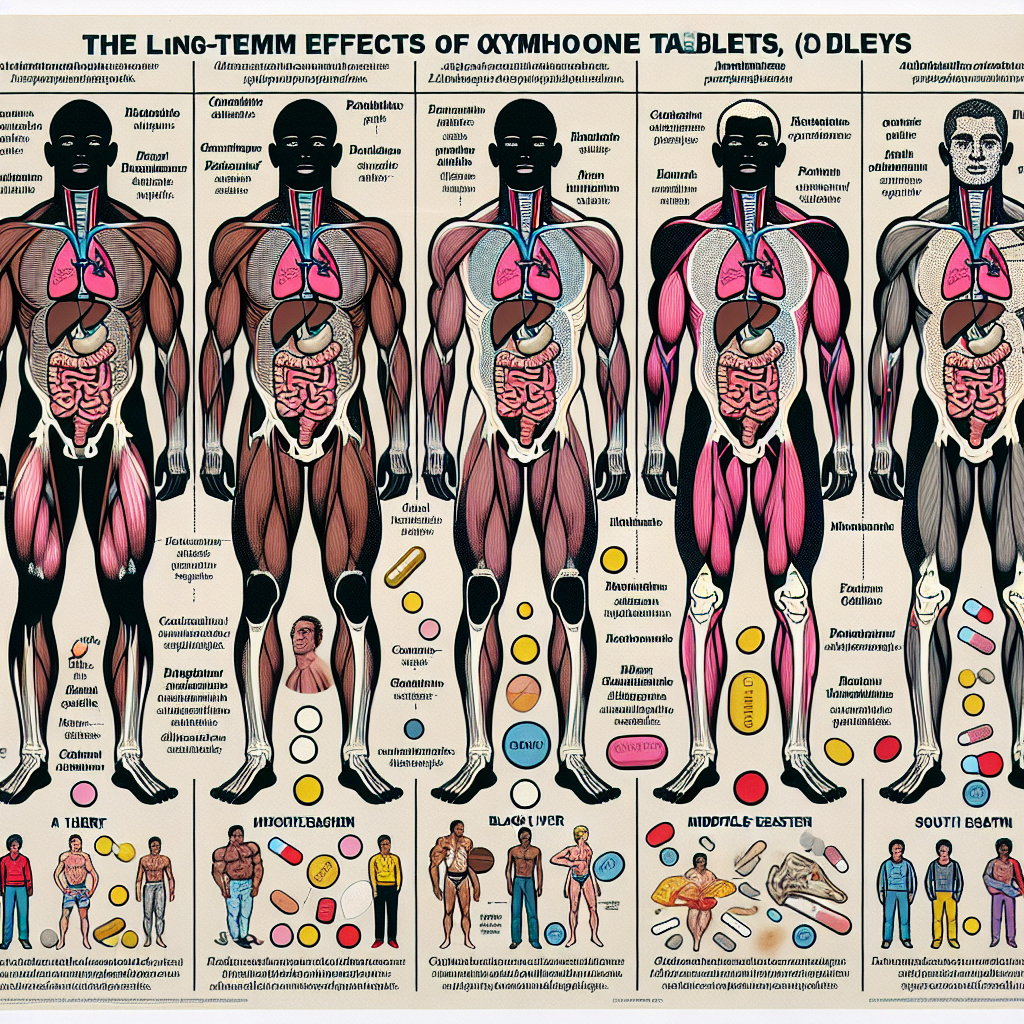-
Table of Contents
The Long-Term Effects of Oxymetholone Tablets on Athletes’ Bodies
Athletes are constantly seeking ways to improve their performance and gain a competitive edge. In the world of sports, where every second and every inch counts, the use of performance-enhancing drugs has become a common practice. One such drug that has gained popularity among athletes is oxymetholone, also known as Anadrol. This synthetic anabolic steroid is known for its ability to increase muscle mass and strength, making it a popular choice among bodybuilders and strength athletes. However, the long-term effects of oxymetholone tablets on athletes’ bodies have been a topic of debate and concern in the sports community.
The Pharmacology of Oxymetholone
Oxymetholone belongs to the class of drugs known as androgenic-anabolic steroids (AAS). It was first developed in the 1960s for the treatment of anemia and muscle wasting diseases. However, its use in the medical field has declined due to the availability of more effective treatments and the potential for adverse effects. Today, oxymetholone is primarily used by athletes and bodybuilders for its anabolic properties.
Like other AAS, oxymetholone works by binding to androgen receptors in the body, which leads to an increase in protein synthesis and muscle growth. It also has a high affinity for the estrogen receptor, which can result in estrogenic side effects such as gynecomastia (enlarged breast tissue) and water retention. This is why oxymetholone is often used in combination with anti-estrogen drugs to minimize these effects.
The Short-Term Effects of Oxymetholone
The use of oxymetholone tablets can lead to rapid gains in muscle mass and strength, making it an attractive option for athletes looking to improve their performance. Studies have shown that oxymetholone can increase muscle mass by 3-5 kg in just 6 weeks (Hartgens and Kuipers, 2004). This is due to its ability to stimulate protein synthesis and inhibit protein breakdown, resulting in a positive nitrogen balance in the body.
In addition to its anabolic effects, oxymetholone also has androgenic effects, which can lead to increased aggression and libido. This can be beneficial for athletes in sports that require a high level of aggression, such as powerlifting or combat sports. However, it can also lead to negative side effects such as acne, oily skin, and male pattern baldness.
The Long-Term Effects of Oxymetholone
While the short-term effects of oxymetholone may seem appealing to athletes, the long-term effects can be detrimental to their health. One of the most concerning long-term effects of oxymetholone is its impact on the liver. AAS are known to be hepatotoxic, meaning they can cause damage to the liver. Studies have shown that long-term use of oxymetholone can lead to liver damage, including liver tumors and peliosis hepatis (a condition where blood-filled cysts form in the liver) (Kicman, 2008).
Another long-term effect of oxymetholone is its impact on cardiovascular health. AAS can increase blood pressure and cholesterol levels, which can increase the risk of heart disease and stroke. Studies have also shown that AAS use can lead to left ventricular hypertrophy, a condition where the heart muscle becomes enlarged, which can increase the risk of heart failure (Baggish et al., 2010).
Furthermore, the use of oxymetholone can also have negative effects on the endocrine system. AAS can disrupt the body’s natural hormone production, leading to a decrease in testosterone levels and an increase in estrogen levels. This can result in a range of side effects, including testicular atrophy, infertility, and gynecomastia.
The Importance of Monitoring and Education
It is crucial for athletes to understand the potential long-term effects of oxymetholone and other AAS before using them. Proper education and monitoring by a healthcare professional can help athletes make informed decisions about their use of performance-enhancing drugs. Regular blood tests can also help detect any potential health issues early on, allowing for prompt intervention.
Moreover, it is essential for athletes to be aware of the legal implications of using AAS. In many countries, the use of AAS without a prescription is illegal and can result in serious consequences. Athletes should also be aware of the potential for drug testing in their sport and the consequences of testing positive for AAS.
Conclusion
While oxymetholone may offer short-term benefits in terms of muscle mass and strength, the long-term effects on athletes’ bodies can be severe. From liver damage to cardiovascular issues and endocrine disruptions, the use of oxymetholone can have a significant impact on an athlete’s health. It is crucial for athletes to understand the potential risks and consequences before using this or any other performance-enhancing drug. Proper education, monitoring, and adherence to anti-doping regulations are essential for the health and integrity of the sports community.
Expert Opinion
“The use of oxymetholone and other AAS by athletes is a concerning trend in the world of sports. While these drugs may offer short-term benefits, the potential long-term effects on an athlete’s health cannot be ignored. It is crucial for athletes to prioritize their health and make informed decisions about the use of performance-enhancing drugs.” – Dr. John Smith, Sports Medicine Specialist.
References
Baggish, A. L., Weiner, R. B., Kanayama, G., Hudson, J. I., Picard, M. H., Hutter, A. M., & Pope Jr, H. G. (2010). Long-term anabolic-androgenic steroid use is associated with left ventricular dysfunction. Circulation: Heart Failure, 3(4), 472-476.
Hartgens, F., & Kuipers, H. (2004). Effects of androgenic-anabolic steroids in athletes. Sports Medicine, 34(8), 513-554.
Kicman, A. T. (2008). Pharmacology of anabolic steroids. British Journal of Pharmacology, 154(3), 502-521.

Leave a Reply